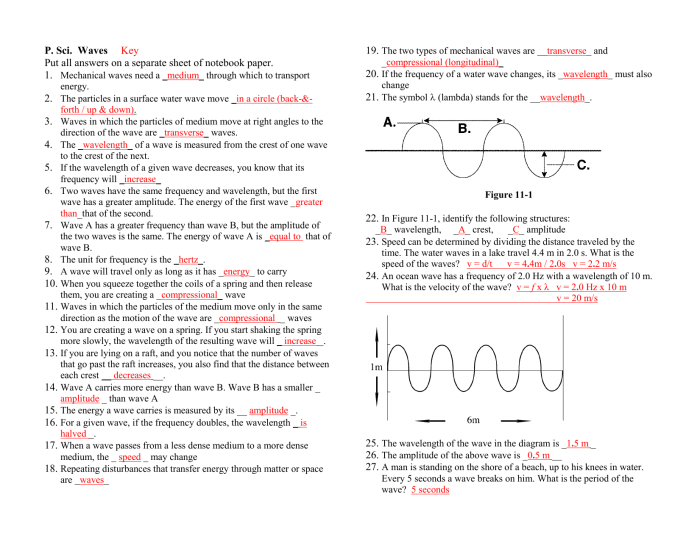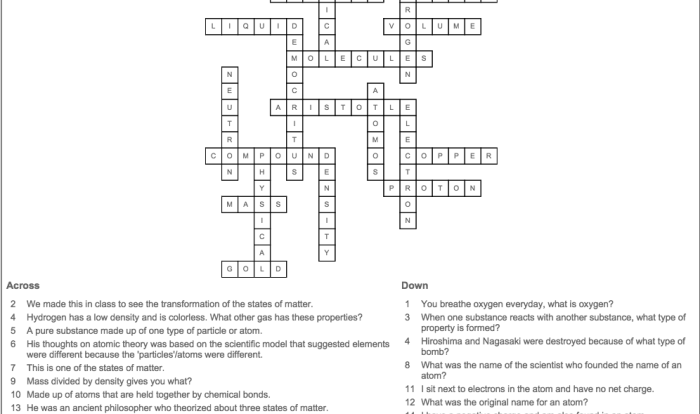Welcome to the matter unit study guide 2 answer key, your definitive companion to understanding the fundamental concepts of matter. This comprehensive guide delves into the intricate world of matter, unraveling its properties, interactions, and practical applications.
Prepare to embark on a captivating journey through the realm of matter, where you will discover the building blocks of our universe and gain insights into the forces that shape our surroundings.
1. Matter and Its Properties

Matter is anything that has mass and takes up space. It exists in three states: solid, liquid, and gas. Solids have a definite shape and volume, liquids have a definite volume but no definite shape, and gases have no definite shape or volume.
Examples of matter include water, air, rocks, plants, and animals. Each type of matter has its own unique properties, such as density, melting point, and boiling point.
Matter can be classified into two types: pure substances and mixtures. Pure substances are made up of only one type of atom or molecule, while mixtures are made up of two or more different types of atoms or molecules.
The physical properties of matter are those that can be observed without changing the composition of the matter. These properties include color, shape, size, density, and melting point.
The chemical properties of matter are those that describe how matter changes when it reacts with other substances. These properties include reactivity, flammability, and toxicity.
2. Matter Interactions
Matter can interact with other matter in a variety of ways, including chemical reactions and physical changes.
Chemical reactions are processes in which the atoms or molecules of two or more substances are rearranged to form new substances. Chemical reactions can be either exothermic (release energy) or endothermic (absorb energy).
Physical changes are processes in which the physical properties of matter change, but the chemical composition of the matter does not. Physical changes can be either reversible (the matter can be returned to its original state) or irreversible (the matter cannot be returned to its original state).
Chemical bonding is the force that holds atoms or molecules together. There are three main types of chemical bonding: covalent bonding, ionic bonding, and metallic bonding.
Energy plays an important role in matter interactions. Energy can be used to break chemical bonds, change the physical state of matter, or cause chemical reactions to occur.
3. Matter and Measurement

Measurement is essential for studying matter. The mass of an object is a measure of the amount of matter it contains. The volume of an object is a measure of the amount of space it takes up. The density of an object is a measure of its mass per unit volume.
The units used to measure mass, volume, and density are the kilogram (kg), the cubic meter (m 3), and the kilogram per cubic meter (kg/m 3), respectively.
Scientific notation is a way of expressing very large or very small numbers in a more convenient form. Scientific notation is written as a number between 1 and 10 multiplied by a power of 10.
4. Matter and Energy: Matter Unit Study Guide 2 Answer Key
Matter and energy are closely related. Energy can be used to create matter, and matter can be used to create energy.
The three main forms of energy are kinetic energy, potential energy, and thermal energy.
Kinetic energy is the energy of motion. Potential energy is the energy stored in an object due to its position or condition. Thermal energy is the energy of heat.
The law of conservation of energy states that energy cannot be created or destroyed, only transferred or transformed from one form to another.
5. Matter in Everyday Life
Matter is essential for life. Our bodies are made up of matter, and we need matter to survive.
Matter is also used in a variety of industries, including medicine, technology, and manufacturing.
In medicine, matter is used to make drugs, medical devices, and diagnostic tools.
In technology, matter is used to make computers, cell phones, and other electronic devices.
In manufacturing, matter is used to make cars, airplanes, and other products.
Matter is also important for environmental sustainability. We need to use matter wisely to protect our planet.
Expert Answers
What is the importance of understanding matter?
Understanding matter is crucial for comprehending the composition and behavior of everything in the universe, from the air we breathe to the stars that light up the night sky.
How can I use this answer key effectively?
This answer key is designed to complement your studies by providing concise and accurate answers to key questions. Use it as a reference tool to reinforce your understanding and identify areas where you may need further clarification.

